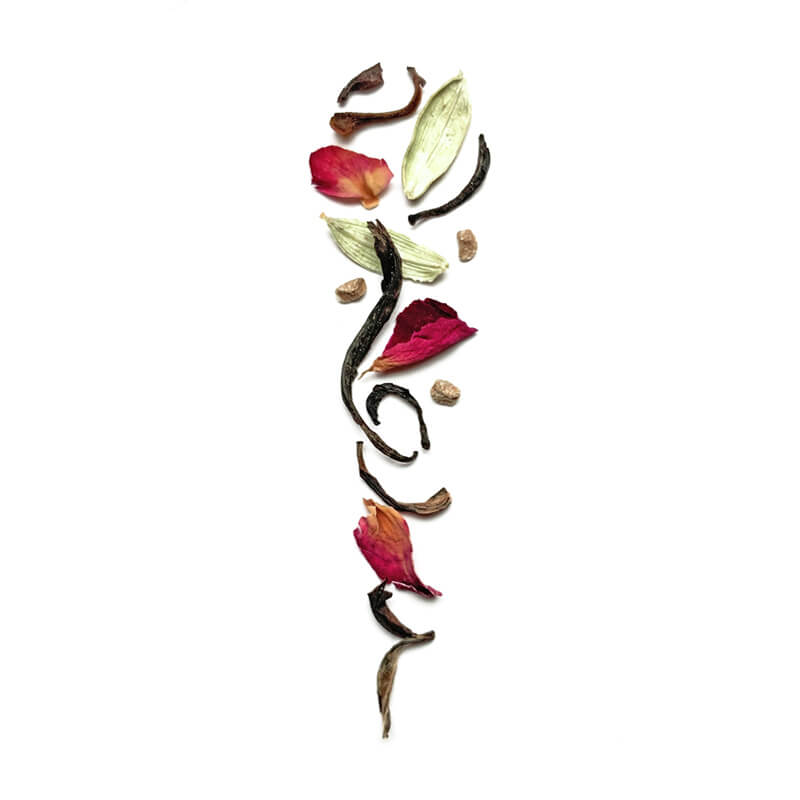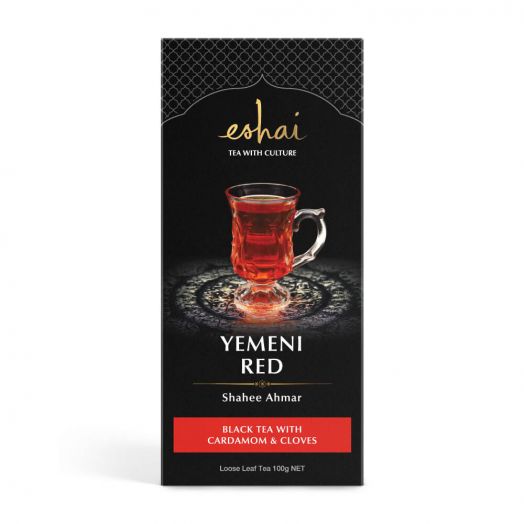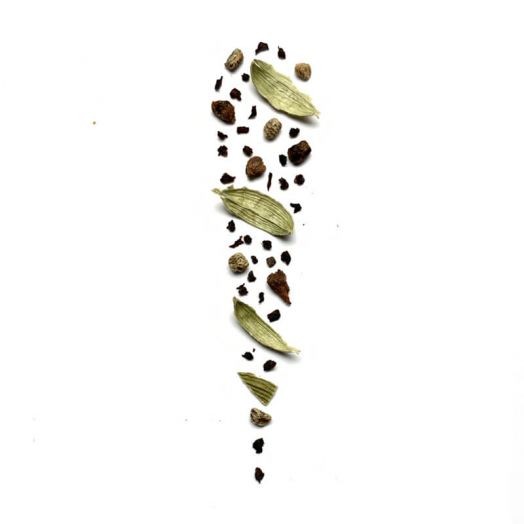What’s In The Packet?
vegan. gluten free. 100% natural. organic ingredients.
no preservatives. artisanal. hand blended. hand-packaged
Experience
Best Enjoyed
Steaming hot, so the floral fragrance can work its magic on your senses. This delightful tea can be transformed into a cooling treat by serving it over ice. If you love tea in its natural state, the soft and harmonious flavours make Persian Cardamom ideal. However, for the authentic experience, add your desired sweetener to lift the floral, spiced notes to new heights. To sup in true Persian style, perch a sugar cube between your teeth or stir your tea with a nabat (rock candy stick).
Best Served
In Turkish tulip cups on a decorative tea tray or your finest china if you’re out to impress guests. Pour dainty doses of tea into each cup, keeping the rest hot in the teapot. Then be a mindful host and keep the refills flowing. For some other-worldly charm, try brewing and serving your Persian Cardamom tea the traditional way: from a samovar (the double-teapot method).
Pairs With
Chayi ba Hel is a fragrant treat unto itself, but for a decadent cultural experience, pair it with fresh and dried fruit and salted, roasted nuts and seeds. Rather than adding sugar to their tea, many Iranians prefer to sweeten the experience by nibbling on sweets with each sip. Common Iranian tea-sweetening treats include, dates, dried white mulberries, zoolbia (sugar-soaked, deep-fried dough spirals), and bamieh (Persian doughnuts).
Tea Time
There are certain times of day in Iran that really should not pass without tea. The nation’s favourite beverage knows no seasonality, but only those who can handle the buzz continue drinking into the night.
Caffeine Level
Moderate
For a softer buzz
Tea Strength
Medium
Brewing Guide
AMOUNT
1 tsp per cup
TEMP
100°C (210°F)
TIME
4 – 5 min
Add 1 tsp of tea to a teapot. Pour in 1 cup of water boiled to 100°C. Steep for 4 – 5 min. Strain into cup. Sweeten to taste.
Brew it the traditional Persian way
Boil freshly drawn ambient water in a teakettle to 100°C;. Warm a small teapot by rinsing with the hot water. First, prepare a tea concentrate by adding 2 – 3 tbsp of tea to the teapot and fill with the hot water. Steep covered for 10 – 15 min. For best results, brew in a ceramic or fine china teapot placed on a simmering samovar or use a stovetop double tea kettle/pot to keep the tea warm while steeping. To serve, pour the tea concentrate from the teapot and adjust to your desired strength by topping up with hot water from the teakettle. Sweeten to taste. Best served in traditional istikan tea glasses (Turkish tulip cups). If sharing, impress guests by serving on a decorative tea tray. Enjoy on its own or with a traditional selection of dates and raisins and sip through a sugar cube between your teeth in true Persian style!



















